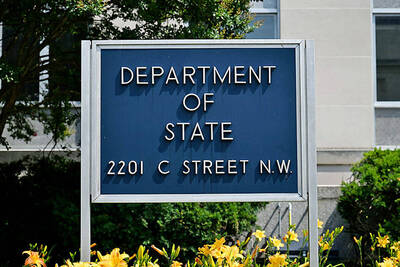The World Bank said the economies of China and India are about 40 percent smaller than earlier estimates indicated after it revised calcuations using consumer relative purchasing power to measure economic might.
The new figures released by the World Bank on Monday differ from conventional gross domestic product figures, which are calculated by simply converting local statistics into US dollars, but don't take into account the wide variations in the purchasing power of a dollar from country to country.
A dollar converted into 7.4 yuan will generally buy more food in China, for example, than it would buy in the US.
The bank's latest revision under its purchasing power parity (PPP) method, based on updated data, shows that India and China -- two of Asia's fastest-growing economies -- are about 40 percent smaller than originally thought.
"While PPP is not useful for commercial purposes, it is far and away the best measure of a country's standard of living," the Carnegie Endowment for International Peace commented on the report.
By the new figures, China is ranked the world's second-largest economy, with its gross domestic product accounting for 9.7 percent of the world total, behind the US, which accounts for 23 percent, it said. Earlier estimates based on older data said China's GDP accounted for 14 percent of global GDP.
Japan was No. 3, Germany was ranked fourth, and India came in fifth, with more than 4 percent of total world output.
Together, those five countries account for half of world economic output, the Washington-based bank said.
"These results are more statistically reliable estimates," the World Bank said in a statement. "It was the most extensive and thorough effort ever to measure PPPs across countries."
Still, the report noted that PPP estimates, like all statistics, are subject to errors and should be treated as approximations.
Under the new estimates, the number of Chinese living on less than US$1 a day -- a widely used benchmark for poverty -- is nearly 300 million.
The earlier estimates put that figure at 100 million.
However, World Bank President Robert Zoellick, in Beijing as he wrapped up a visit to China, cautioned that the new estimate also may be flawed in that the price benchmarks were collected from urban areas.
"One has to be extremely careful about trying to draw judgements about poverty based on these statistics," Zoellick told reporters in Beijing yesterday.
He said even more accurate measures would be based on the kinds of goods that China's poor majority would buy, which would be weighted toward food.
"We're working with the Chinese government to refine that work and as I think that will be out some time next year," he said.

MISINFORMATION: The generated content tends to adopt China’s official stance, such as ‘Taiwan is currently governed by the Chinese central government,’ the NSB said Five China-developed artificial intelligence (AI) language models exhibit cybersecurity risks and content biases, an inspection conducted by the National Security Bureau (NSB) showed. The five AI tools are: DeepSeek, Doubao (豆包), Yiyan (文心一言), Tongyi (通義千問) and Yuanbao (騰訊元寶), the bureau said, advising people to remain vigilant to protect personal data privacy and corporate business secrets. The NSB said it, in accordance with the National Intelligence Services Act (國家情報工作法), has reviewed international cybersecurity reports and intelligence, and coordinated with the Ministry of Justice Investigation Bureau and the National Police Agency’s Criminal Investigation Bureau to conduct an inspection of China-made AI language

LIMITS: While China increases military pressure on Taiwan and expands its use of cognitive warfare, it is unwilling to target tech supply chains, the report said US and Taiwan military officials have warned that the Chinese People’s Liberation Army (PLA) could implement a blockade within “a matter of hours” and need only “minimal conversion time” prior to an attack on Taiwan, a report released on Tuesday by the US Senate’s China Economic and Security Review Commission said. “While there is no indication that China is planning an imminent attack, the United States and its allies and partners can no longer assume that a Taiwan contingency is a distant possibility for which they would have ample time to prepare,” it said. The commission made the comments in its annual

CHECKING BOUNDARIES: China wants to disrupt solidarity among democracies and test their red lines, but it is instead pushing nations to become more united, an expert said The US Department of State on Friday expressed deep concern over a Chinese public security agency’s investigation into Legislator Puma Shen (沈伯洋) for “secession.” “China’s actions threaten free speech and erode norms that have underpinned the cross-strait ‘status quo’ for decades,” a US Department of State spokesperson said. The Chongqing Municipal Public Security Bureau late last month listed Shen as “wanted” and launched an investigation into alleged “secession-related” criminal activities, including his founding of the Kuma Academy, a civil defense organization that prepares people for an invasion by China. The spokesperson said that the US was “deeply concerned” about the bureau investigating Shen

‘TROUBLEMAKER’: Most countries believe that it is China — rather than Taiwan — that is undermining regional peace and stability with its coercive tactics, the president said China should restrain itself and refrain from being a troublemaker that sabotages peace and stability in the Indo-Pacific region, President William Lai (賴清德) said yesterday. Lai made the remarks after China Coast Guard vessels sailed into disputed waters off the Senkaku Islands — known as the Diaoyutai Islands (釣魚台) in Taiwan — following a remark Japanese Prime Minister Sanae Takaichi made regarding Taiwan. Takaichi during a parliamentary session on Nov. 7 said that a “Taiwan contingency” involving a Chinese naval blockade could qualify as a “survival-threatening situation” for Japan, and trigger Tokyo’s deployment of its military for defense. Asked about the escalating tensions